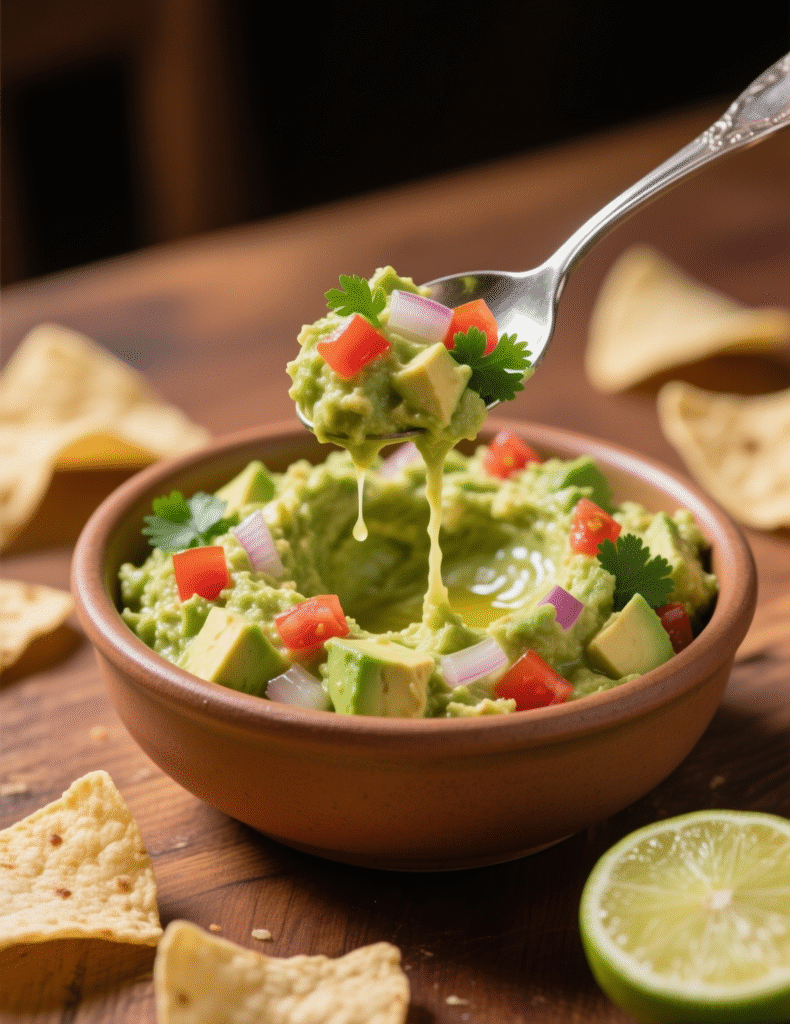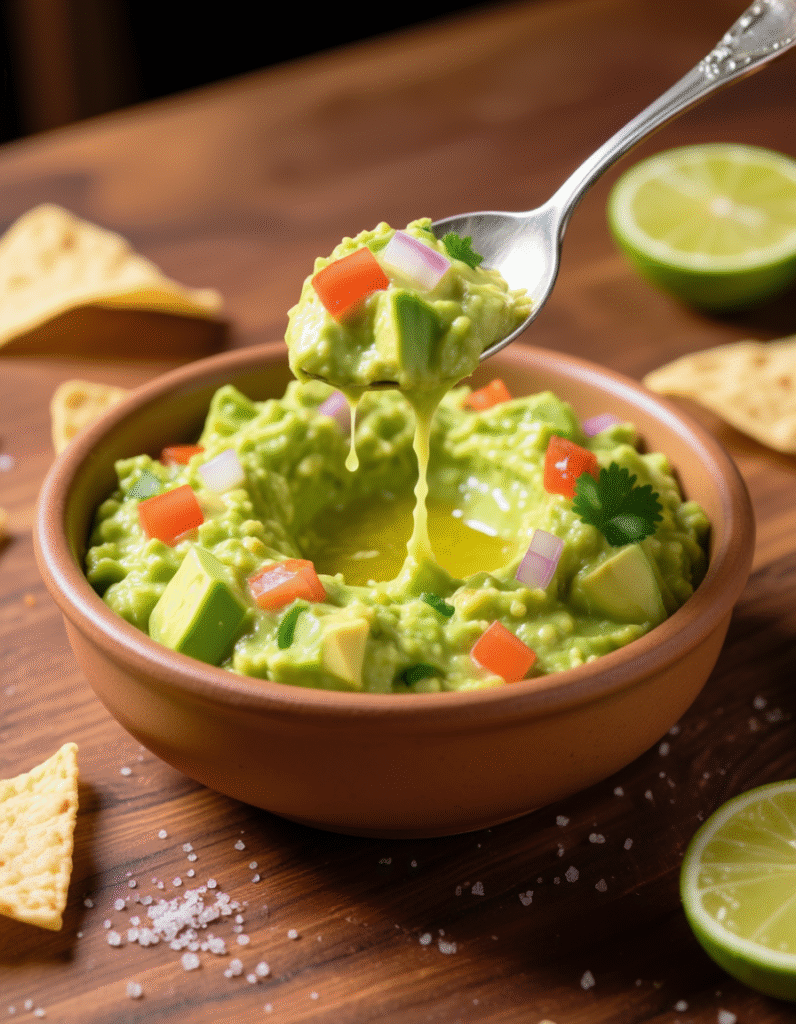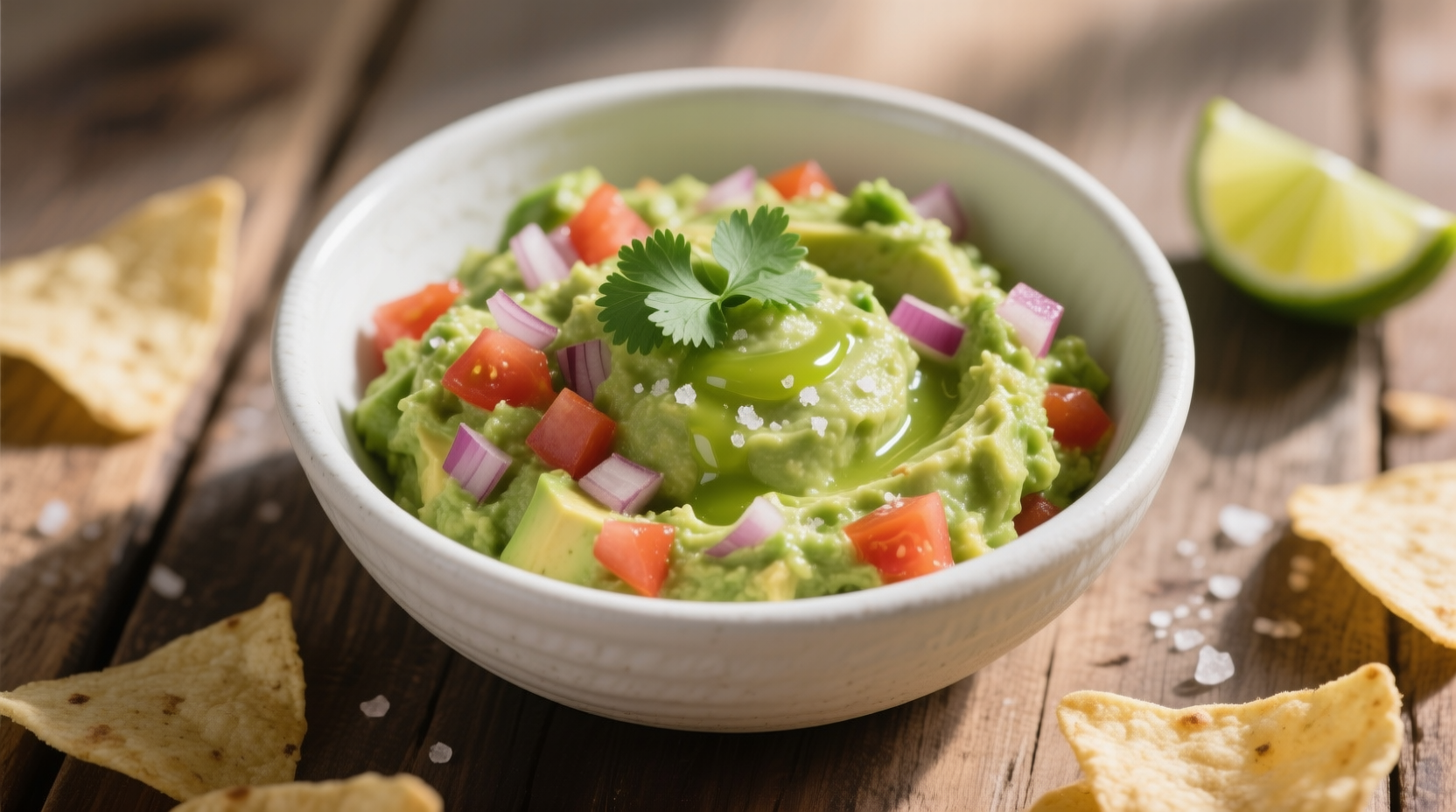Guacamole looks simple from the outside. Mash some avocados, toss in lime, maybe onion, call it done. But the truth is, this dish carries centuries of cultural weight, technical subtleties, and ingredient science that make or break its flavor. Professionals know that it’s not just about throwing things in a bowl—it’s about coaxing out balance, texture, and depth while respecting tradition.
The History That Sits in a Bowl
Guacamole comes from the Aztecs, who called it ahuacamolli. That translates to “avocado sauce.” It was prized for its richness, long before Europeans even knew avocados existed. Spanish colonists later spread it abroad, but it never lost its roots in Mexico’s kitchens.
Why does this matter to you as a cook? Because understanding its origin is more than trivia—it’s a reminder that guacamole isn’t just a dip for chips. It’s a cultural symbol. Serve it wrong and it feels flat. Serve it right and you’re echoing history.
Avocados: The Non-Negotiable Foundation
A guacamole recipe rises or collapses depending on the avocado. Hass avocados dominate the market today because of their fat content and creamy flesh. Their oil percentage hovers around 15–20%, far higher than watery Florida avocados. This fat is what makes guacamole luscious instead of bland.
Ripeness, though, is everything. Press gently at the stem end—if it yields but doesn’t collapse, you’re in business. Overripe avocados bring stringiness and brown discoloration, both disastrous. Under-ripe? They’re firm, grassy, and will refuse to mash properly.
One trick chefs often use in restaurants is to stagger ripeness. Mix one just-ripe avocado with another a little riper. You get body from the firmer one, creaminess from the softer. That contrast keeps guacamole from turning into green baby food.
The Acid That Wakes It Up
Citrus is not optional. Lime is classic. Lemon is fallback. Vinegar, in emergencies, works but introduces sharpness that can dominate. The goal is brightness, not sourness.
Acidity does more than flavor. It slows oxidation. Left exposed, avocado flesh browns fast due to polyphenol oxidase activity. Citrus interferes with that, buying you a little time before the dreaded brown crust sets in. Restaurants often stir lime juice immediately after mashing for exactly this reason.
How much lime? Here’s where mistakes happen. Too much and guacamole tastes like lime pudding. Too little and it falls flat. Start with half a lime per two avocados, then taste. Professional chefs always season iteratively, not all at once.
Onion: Sharp or Subtle
Raw onion polarizes people. Some adore the bite, others find it overwhelming. The compromise is technique. Mince it finely. Salt it. Rinse briefly in cold water. This pulls out sulfur compounds that cause harshness. What remains is a cleaner onion flavor that complements instead of dominates.
White onion is most traditional in Mexico, where it’s sharper but also cleaner. Red onion adds sweetness, which works in fusion versions. Yellow onion is rarely used, as its cooked flavor notes feel out of place.
Pro tip from kitchens: soak diced onion in lime juice for a few minutes before adding. This pre-pickling mellows it while building complexity.
Tomatoes: To Add or Not
Here lies controversy. Purists argue tomato has no place in guacamole. Others insist its sweetness and juiciness lighten the richness. Both camps have merit.
The problem with tomato is water content. Too much and guacamole thins into soup. Professionals who include it use plum tomatoes, which hold shape better, and remove the watery seed pulp before dicing. That ensures tomato adds sweetness and color, not watery blandness.

Cilantro: Herb of Disagreement
Cilantro either lifts guacamole into freshness or ruins it for those genetically sensitive to its soapy aldehydes. Research estimates around 4–14% of people find cilantro repulsive due to olfactory-receptor genes.
For professionals, the rule is: know your audience. In Mexico, cilantro is common, often essential. In a modern restaurant, offering a version without it might be smart. Add sparingly, taste, and remember: you can always add more, but once in, you can’t take it out.
Chili Heat: Subtle, Not Dominant
Jalapeños or serranos bring heat and flavor. Serranos, smaller and hotter, are traditional. Jalapeños are milder, more accessible. Either should be seeded and minced unless you want blowtorch intensity.
Capsaicin binds to fat, so guacamole’s richness tempers chili fire beautifully. This is why a small amount of heat adds dimension without overwhelming. Think of it as background hum, not lead guitar.
Salt: The Silent Architect
Without salt, guacamole tastes dead. With salt, ingredients pop. Chefs don’t sprinkle blindly. They use flaky kosher or sea salt, which disperses better than table salt. A professional tip: mash avocado lightly, salt early, then fold in other ingredients. Salt dissolves best into the fat matrix that way.
Texture: The Most Overlooked Detail
Some chefs mash until smooth, others leave it chunky. Texture is identity. Too smooth and it feels like a puree, too chunky and it feels unfinished.
Mortar and pestle (molcajete) is the traditional tool. Its volcanic stone surface tears cells instead of slicing, releasing essential oils from onion, garlic, and chili. This creates flavor that can’t be replicated by knives alone. If you’ve never tried guacamole from a molcajete, you haven’t truly tasted it.
Common Mistakes Professionals Avoid
- Over-mixing – Leads to paste, not guacamole.
- Over-liming – Creates sour, unbalanced mush.
- Refrigerating too long – Cold dulls flavor, and browning still creeps in.
- Forgetting seasoning at the end – Always taste after resting for a minute. Flavors settle, sometimes shifting balance.
Trends and Modern Takes
Guacamole isn’t static. Chefs experiment. Some fold in roasted corn for sweetness. Others add pomegranate seeds for crunch and tang. Bacon, mango, even kimchi have appeared in modern guacamoles. These aren’t traditional, but they reflect how global kitchens evolve.
Yet, professionals understand the line: innovate, but don’t erase. The heart of guacamole is avocado, lime, onion, chili, salt. Strip those and it’s not guacamole anymore.
Recipe: Classic Guacamole
Ingredients
- 3 ripe Hass avocados
- 1 small white onion, finely minced
- 1 serrano chili, deseeded, minced
- 1 medium lime, juiced
- 2 tbsp cilantro leaves, chopped (optional)
- Salt to taste
Method
- Halve avocados, remove pits, scoop flesh into a bowl.
- Mash gently with a fork, leaving some chunks.
- Add onion, chili, and half the lime juice. Mix lightly.
- Fold in cilantro if using.
- Season with salt, taste, and adjust lime if needed.
- Serve immediately, ideally in a molcajete, with tortilla chips or warm tortillas.

Serving and Storage
Guacamole shines when fresh. If you must store, cover tightly with plastic wrap pressed directly against the surface to limit oxidation. Even better, keep a thin layer of lime juice on top as a barrier. Refrigerate no longer than 24 hours. Beyond that, flavor dulls.
Restaurants sometimes use a trick: press avocado pits into the guacamole. It slows browning slightly, though not dramatically. It’s more tradition than science, but diners often expect it.
Nutritional Notes
Guacamole is calorie-dense, yes, but its fats are largely monounsaturated. Avocados provide potassium, fiber, folate, and antioxidants. Compared to sour cream dips, guacamole is nutrient-rich. Its satiety effect makes it surprisingly balanced despite high calories.
Why Professionals Revere Guacamole
Chefs admire guacamole because it teaches restraint. It’s proof that fewer ingredients, handled well, create something extraordinary. It’s also one of those recipes where your technique, not your shopping list, decides quality.
The difference between mediocre and outstanding guacamole is not exotic additions—it’s the precision in salt, ripeness, acidity, and handling.
Conclusion
Classic guacamole is deceptively simple, endlessly nuanced. It demands attention to ingredient quality, ripeness, texture, and balance. For chefs and serious cooks, mastering guacamole is an exercise in discipline, culture, and taste.
So, next time you mash those avocados, remember: you’re not just making a dip. You’re channeling centuries of culinary wisdom into a bowl. And that, truly, is the essence of cooking.
FAQs
What type of avocado is best for guacamole?
Hass avocados are best due to their creamy texture and higher fat content.
How do I keep guacamole from turning brown?
Add lime juice and press plastic wrap directly on the surface to slow oxidation.
Can I make guacamole ahead of time?
Yes, but it’s best eaten fresh—store no longer than 24 hours in the fridge.
Is cilantro necessary in guacamole?
No, it’s optional; many enjoy it, but some people dislike its flavor due to genetics.
Should guacamole be smooth or chunky?
Traditionally, it’s slightly chunky for texture, not a puree.
Can I use lemon instead of lime?
Yes, lemon works, though lime provides a more authentic flavor.
Are tomatoes authentic in guacamole?
Not traditionally, but some recipes use diced plum tomatoes for sweetness and color.
What’s the role of salt in guacamole?
Salt enhances avocado flavor and balances acidity and heat.
Can I add other ingredients like fruit or bacon?
Yes, modern variations exist, but classic guacamole sticks to simple ingredients.
Is guacamole healthy?
Yes, it’s nutrient-rich, high in fiber and healthy fats, though calorie-dense.

Mariana is a passionate home cook who creates delicious, easy-to-follow recipes for busy people. From energizing breakfasts to satisfying dinners and indulgent desserts, her dishes are designed to fuel both your body and hustle.
When she’s not in the kitchen, she’s exploring new flavors and dreaming up her next recipe to share with the Foodie Hustle community.

